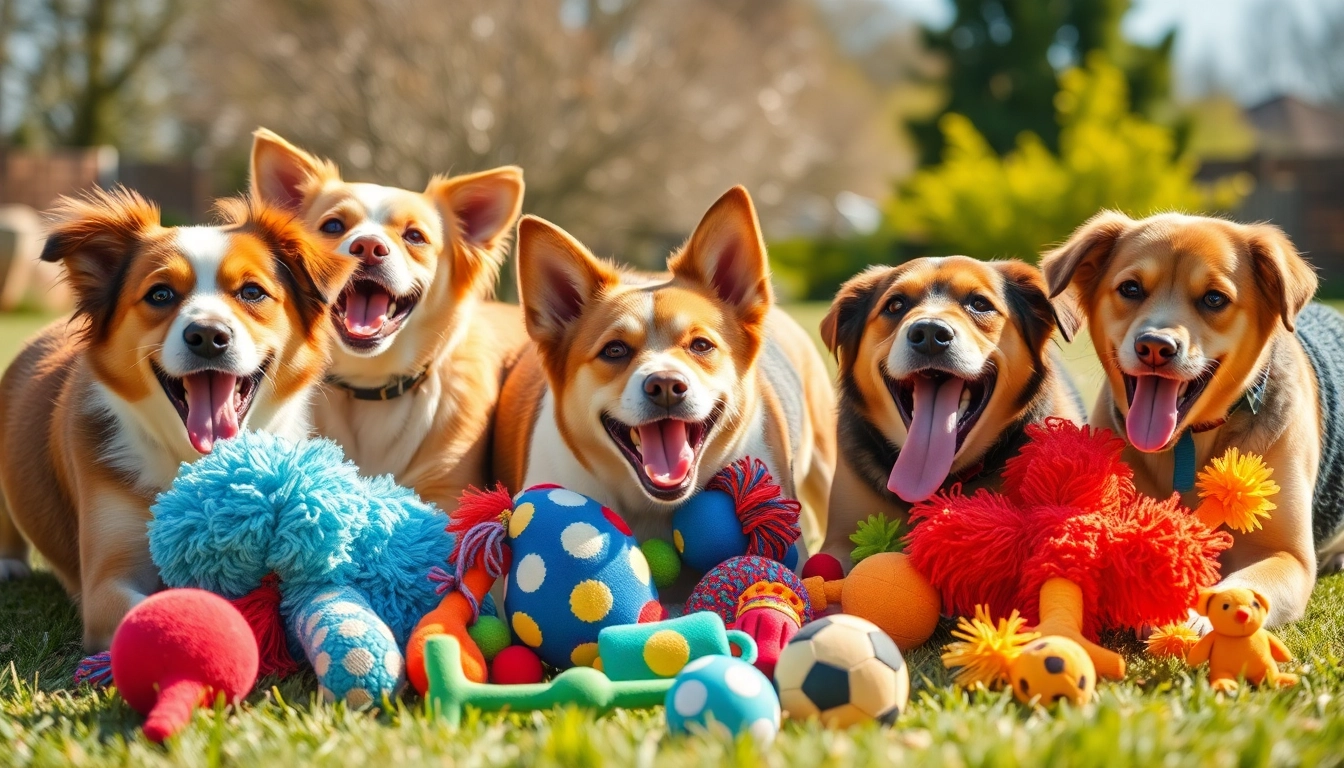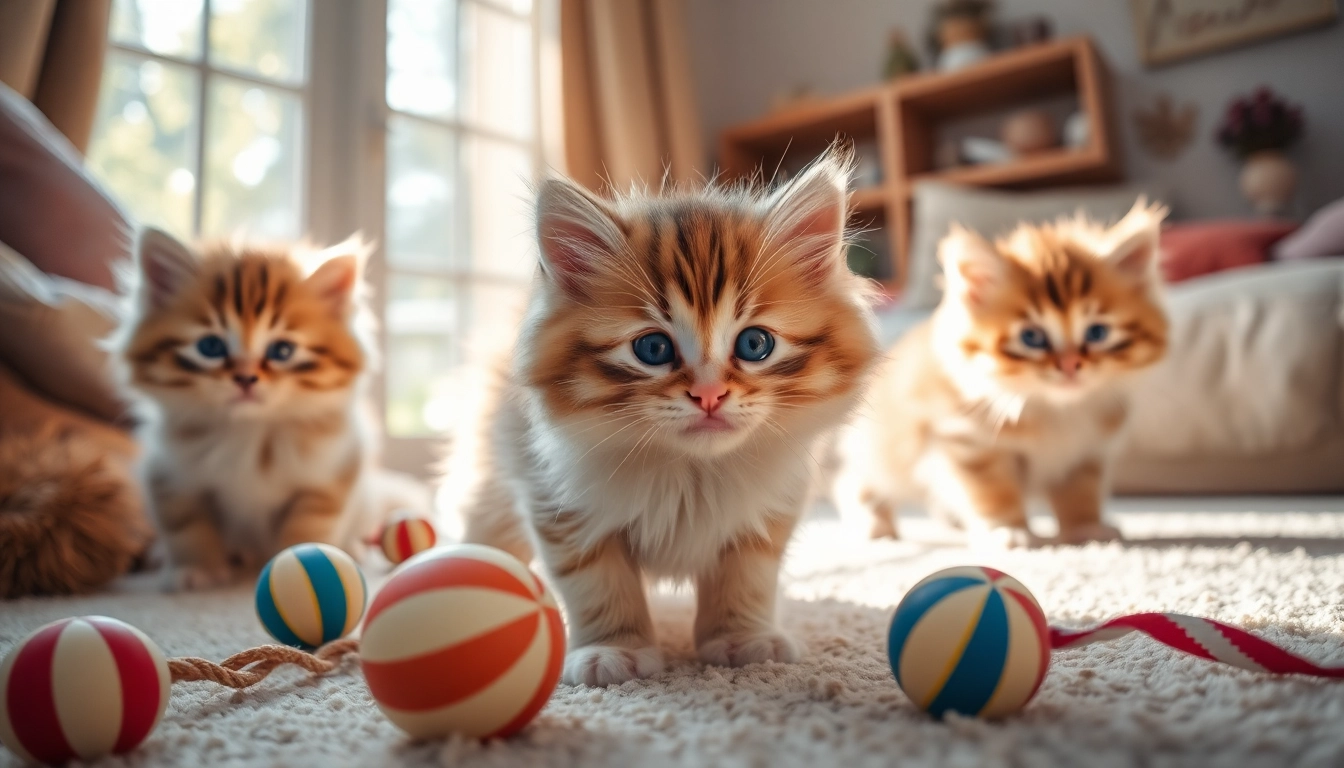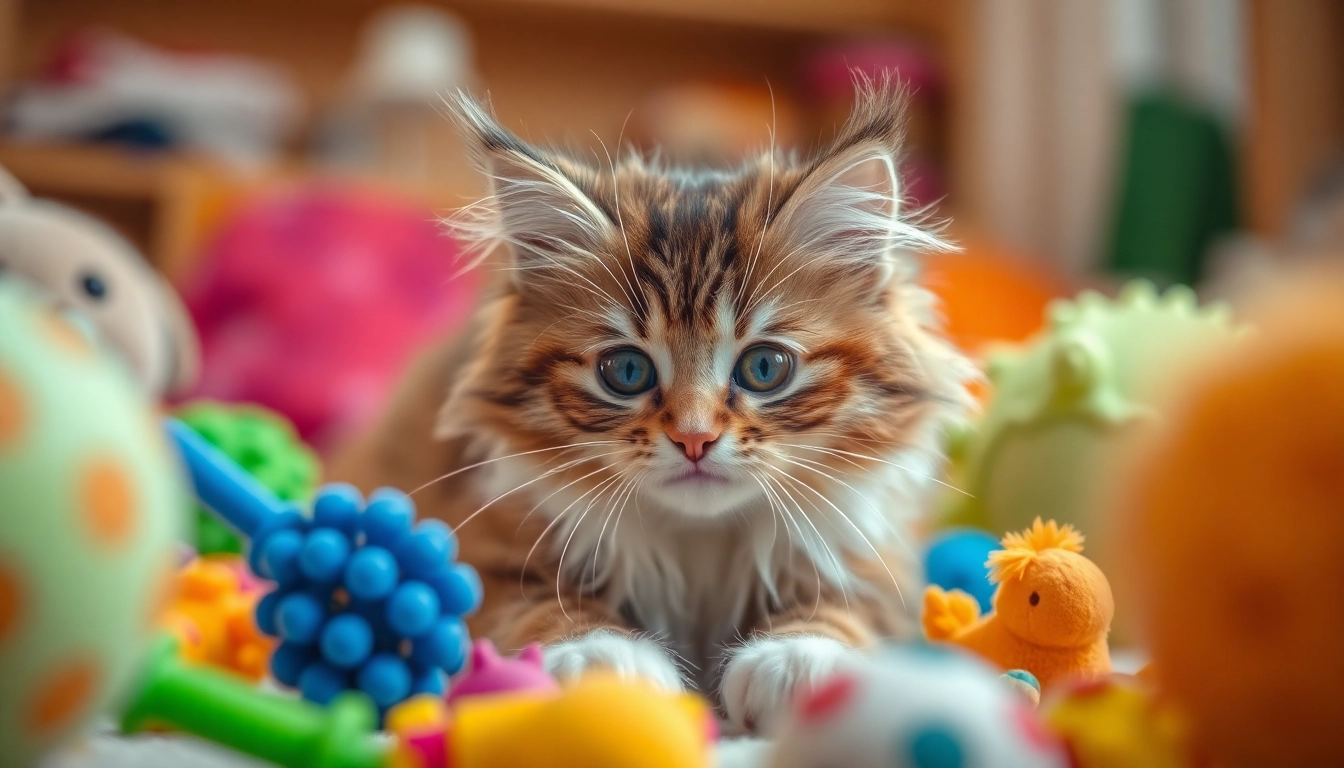Understanding Different Types of Pet Toys
Pet toys are essential for the wellbeing and development of our furry friends. They not only provide entertainment but also aid in physical and mental stimulation. With a plethora of options available on the market, understanding the different types of pet toys is crucial for any pet owner. This section will delve into various categories of pet toys, highlighting their unique features and benefits.
Exploring Fetch and Throw Toys
Fetch and throw toys are a staple in the pet toy genre, providing a fun way for dogs to engage their instincts. Created for hearty outdoor use, these toys often include balls, frisbees, and specialized fetch sticks. Materials can range from rubber to plastic, each offering different benefits.
The primary purpose of fetch toys is to promote physical exercise. When a dog retrieves a thrown toy, it experiences bursts of activity which contribute to its overall physical health. A classic example is the tennis ball, loved by dogs worldwide. However, it’s essential to monitor the wear and tear on these toys. Materials like rubber can wear out more slowly and may offer longer-lasting play.
Interactive and Puzzle Toys for Dogs
Interactive and puzzle toys have gained popularity as owners look for innovative ways to keep their pets mentally stimulated. These toys often contain hidden treats or challenges that dogs must work to solve, engaging their natural instincts in a fun way.
Studies have shown that dogs who engage with puzzle toys exhibit lower levels of stress and anxiety. They learn to think critically and problem-solve, skills that translate into better behavior at home. Popular options include the KONG toys that can be stuffed with treats, providing both a chewing experience and mental exercise.
Choosing Safe Chew Toys for Your Pet
Chew toys are indispensable, particularly for dogs that have a tendency to gnaw. Selecting the right chew toy requires a keen understanding of safety. Opt for toys made from non-toxic materials and ensure they are appropriate for your pet’s size.
Natural rubber and hard nylon are popular choices as they are durable and help clean your dog’s teeth. Chew toys serve various purposes: they can soothe teething puppies or provide an unhealthy chewing dog a safe alternative to furniture or footwear. However, always supervise your pet with new chew toys to ensure they don’t ingest any pieces.
Benefits of Using Quality Pet Toys
Quality pet toys provide numerous benefits that extend beyond mere entertainment. Understanding these advantages can help pet owners make informed choices, ensuring their pets live healthier, happier lives.
Enhancing Physical Activity with Pet Toys
One of the most significant benefits of pet toys is their ability to encourage physical activity. Toys that promote movement, such as balls and frisbees, stimulate dogs to run, jump, and play.
Regular physical activity is crucial for maintaining healthy weights, reducing the risk of obesity, and improving cardiovascular health in dogs. For example, a simple game of fetch can be a fun way for owners to ensure their pets engage in adequate exercise. Engaging in play sessions with your pet also fosters a stronger bond and creates shared experiences.
Boosting Mental Stimulation through Play
Mental stimulation is just as essential as physical exercise for dogs. Quality toys that challenge your pet’s intellect contribute to overall well-being. Puzzle toys, for instance, keep dogs occupied while encouraging them to think critically about how to retrieve rewards.
Various studies suggest that mental stimulation through play reduces the risk of anxiety and destructive behavior commonly seen in bored pets. Activities such as hide-and-seek with toys can enhance problem-solving capabilities and provide psychological satisfaction for pets.
Improving Behavioral Issues with Interactive Toys
Interactive toys can be particularly effective in addressing behavioral issues in pets. Dogs left alone for extended periods may develop anxieties or exhibit destructive behaviors due to boredom.
Utilizing interactive toys can curb these tendencies by directing your pet’s energy positively. Toys that dispense treats when solved can provide a rewarding experience and keep them occupied in your absence, leading to better behavior as they engage their instincts and intellect.
How to Select the Right Pet Toys
Choosing the right pet toy requires careful consideration of your dog’s needs and preferences. This section offers guidance on how to make informed choices when selecting pet toys.
Assessing Your Pet’s Preferences
Understanding your pet’s preferences is key to toy selection. Some dogs prefer squeaky toys, while others gravitate toward chewable options. Observe how your pet interacts with existing toys and invest in similar types. For instance, if your dog loves tug-of-war, incorporating rope toys into their collection can enhance playtime.
Moreover, consider your pet’s breed, age, and health status. Younger, more active dogs may benefit from robust toys, while senior dogs may prefer soft, gentle options that promote comfort rather than vigorous play.
Considering Size and Material Safety
The size and material of pet toys are fundamental to ensuring safety. Avoid toys that are too small, as they pose choking hazards, especially to larger breeds that may be overly enthusiastic while playing.
Look for toys that are labeled as non-toxic and free of harmful chemicals. Rubber and cotton are commonly used materials in quality pet toys. Furthermore, investigate whether the toy’s durability fits your dog’s chewing habits, ensuring it can withstand their play without posing any risks.
Tips for Pet Toy Maintenance
Maintaining and regularly checking pet toys is vital for safety and longevity. Clean your pet’s toys occasionally to minimize the risk of bacteria buildup. For soft toys, machine washing is often a viable option, while rubber toys can be scrubbed with pet-safe cleaners.
Periodic inspection for wear and tear is also crucial. Replace toys that show significant signs of damage, such as frayed edges or cracks, which may become potential hazards. A well-maintained toy not only contributes to your pet’s happiness but also significantly prolongs its lifespan.
DIY Pet Toys: Fun and Cost-effective Options
Creating your own pet toys can be an enjoyable and cost-effective way to keep your pet entertained. DIY toys can also provide a personal touch and be customized to your pet’s specific preferences.
Using Common Household Items
Many household items can be repurposed into engaging toys for your pets. Old t-shirts, towels, and socks can easily be transformed into tug toys. Simply braid fabric strips for an attractive, chewable toy that many dogs find irresistible.
Common kitchen items such as empty plastic water bottles can also become exciting toys. The crinkly noise and unpredictable movements can keep pets engaged. However, always supervise your pet with homemade toys to ensure safety and avoid any choking hazards.
Tutorials for Creating Homemade Pet Toys
Creating homemade pet toys can be both creative and straightforward. For example, a simple sock toy can be crafted by filling an old sock with crinkly paper and knotting it at the end. Such toys are not only fun but are also excellent for chewing and tugging.
Another popular DIY option is the tennis ball toy. Carefully cut a small slit in the ball and insert treats before sealing it. Your dog will have endless fun figuring out how to retrieve the goodies inside.
Ensuring Safety in DIY Toys
While DIY toys can bring joy to your pets, safety should always come first. Ensure that all materials used are non-toxic and avoid items that could break easily or create choking hazards. Always opt for durable fabric and thoroughly inspect each toy before giving it to your pet.
For example, avoid using items that may fray, as small pieces could become dangerous if ingested. Regularly check for any signs of wear and replace DIY toys as necessary to ensure your pet’s safety during playtime.
Marketing Trends in Pet Toys
As the pet industry continues to grow, several trends are shaping the market for pet toys. From eco-friendly materials to subscription services, understanding these trends can help consumers make informed purchasing decisions.
Emergence of Eco-friendly Pet Toys
With a growing consumer demand for sustainable products, eco-friendly pet toys are on the rise. Made from natural and recycled materials, these toys provide pet owners with a guilt-free option that minimizes environmental impact.
Many brands now offer toys made from organic cotton, hemp, and even recycled materials. By choosing eco-friendly toys, consumers can contribute to sustainability while ensuring their pets enjoy safe, non-toxic playthings.
Popularity of Subscription Boxes for Pet Toys
Subscription boxes for pet toys are increasingly popular among pet owners, offering convenience and variety. These services often curate selections based on your pet’s preferences, providing a mix of toys and treats at regular intervals.
Such boxes enhance the joy of discovery for pets, introducing them to new toys and experiences while also saving time and effort for pet owners. Additionally, subscription boxes pinpoint trends in pet ownership, catering to changing consumer demands.
Analyzing Consumer Preferences and Buying Behavior
Consumer behavior continues to evolve, with many pet owners becoming more mindful of their purchasing decisions. Increasingly, buyers are seeking quality over quantity, preferring durable, well-crafted toys that offer longevity.
The importance of online reviews and social media presence is also notable, with many consumers relying on fellow pet owners for insights before making purchases. Brands that effectively engage with customers online can build loyal followings and foster a sense of community among pet owners.



